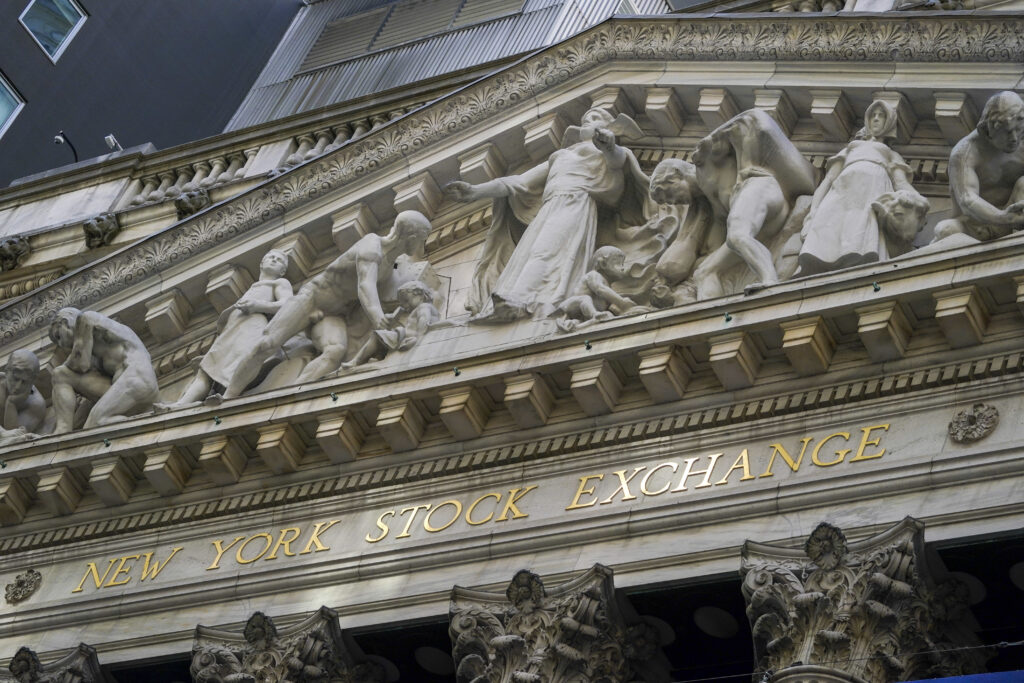U.S. stock indexes rally on Friday and were on course for weekly gains, as signs of easing price pressures and slowing economic growth raised hopes the Federal Reserve could end its monetary tightening campaign soon. The S&P 500 and Nasdaq rallied to fresh 14-month highs on Thursday as a slew of economic data pointed to cooling inflation, eclipsing concerns about further interest rate hikes that the Fed forecast on Wednesday. The Associated Press has the story:
Wall Street rallies as winning streak extends
Newslooks- NEW YORK (AP)
Stocks are opening mostly higher as Wall Street looks to extend the market’s longest winning streak in a year and a half. The S&P 500 was up 0.2% in the early going Friday. The benchmark index is trading at the highest level it’s been at since April 2022 of last year. The Dow added 71 points, or 0.2%, and the Nasdaq slipped 0.1%. Adobe was among the biggest winners early on. The software maker rose 5% after raising its outlook and turning in results that easily beat forecasts. Treasury yields rose. The yield on the 10-year Treasury note climbed to 3.78%
Shares advanced in Europe and Asia on Friday after a broad-based rally on Wall Street. U.S. futures were little changed and oil prices wobbled lower after gaining more than 3% on Thursday.
Germany’s DAX added 0.2% to 16,328.40 and the CAC 40 in Paris surged 0.6% to 7,337.98. Britain’s FTSE 100 was up 0.2% at 7,642.77.
The future for the S&P 500 gained 0.2% while that for the Dow Jones Industrial Average edged less than 0.1% higher.Wall Street
Tokyo’s Nikkei 225 index closed at a 33-year high after the Bank of Japan wrapped up a policy meeting by keeping its ultra-lax monetary stance unchanged, as expected. It is a standout among central banks, most of which have sought to rein in inflation by raising interest rates.
The key Japanese rate has stayed at minus 0.1% for a decade and policymakers have indicated they are not convinced that current inflation, which finally has surpassed the BOJ’s target of about 2%, will be sustained.
“With extremely high uncertainties surrounding economies and financial markets at home and abroad, the Bank will patiently continue with monetary easing while nimbly responding to developments in economic activity and prices as well as financial conditions,” the BOJ said in a statement.
Share prices in Japan have been trading around their highest level in more than 30 years, while the Japanese yen has weakened against the dollar and other major currencies — reflecting the gap in interest rates in Japan and elsewhere.
The Nikkei gained 0.7% to 33,706.08, while the dollar rose to 141.00 yen from 140.29 yen late Thursday.
Investors also were encouraged by moves in Beijing to support the faltering recovery from the disruptions of the pandemic with more government spending and a slight easing of credit.
“It seems China’s policymakers have had enough and are unwilling to sit idle and watch consumer sentiment crumble,” Stephen Innes of SPI Asset Management said in a commentary. “The leadership is planning major steps to revive the country’s flagging economy, including the possibility of billions of dollars in new infrastructure spending and looser rules to encourage property investors to buy more homes.”
Hong Kong’s Hang Seng index jumped 1.1% to 20,040.37. The Shanghai Composite index was up 0.6% at 3,273.33.
In Seoul, the Kospi advanced 0.7% to 2,625.79. Bangkok’s SET shed 0.3% and India’s Sensex jumped 0.8%.
Australia’s S&P/ASX 200 gained 1.1% to 7,251.20.
On Thursday, the S&P 500 rallied 1.2% to 4,425.84, it’s highest level since April 2022. The Dow gained 1.3% and the Nasdaq climbed 1.2%.
A report showed sales at U.S. retailers unexpectedly strengthened last month, suggesting spending by consumers is holding up despite higher interest rates on credit cards and other borrowing. Economists were forecasting a drop.
A separate report said slightly more workers applied for unemployment benefits last week than expected. That’s still relatively low, but could signal the job market is finally starting to loosen after the Fed’s barrage of rate hikes since early last year.
The market is still absorbing the Federal Reserve’s warning from a day earlier that it could raise interest rates two more times this year in its battle against inflation. It’s already hiked its benchmark rate to the highest level since 2007, which has helped slow inflation somewhat but has also caused severe pain in some areas of the economy.
The U.S. stock market has leaped nearly 24% since hitting a bottom last October, as the economy has so far avoided a recession and inflation has fallen from its peak last summer.
Traders expect the Fed’s to raise rates again at its next meeting, on July 25-26 but are mostly convinced that will be the last increase of the year, according to data from CME Group.
In other trading Friday, U.S. benchmark crude oil gave up 34 cents to $70.28 per barrel in electronic trading on the New York Mercantile Exchange. It surged $2.35 on Thursday to $70.62 per barrel.
Brent crude, the international standard, fell 28 cents to $75.39 per barrel.
The euro fell to $1.0945 from $1.0946.







